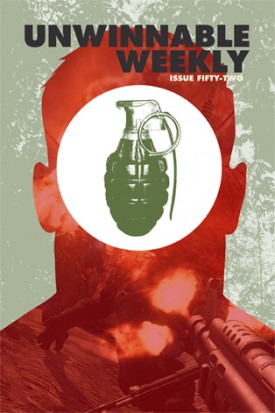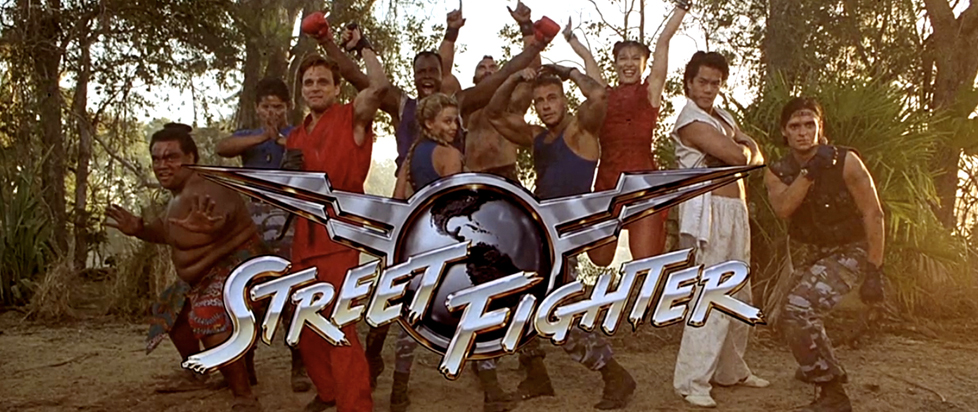
A Good Start
The following is a reprint from Unwinnable Weekly Issue Fifty-Two. If you enjoy what you read, please consider purchasing the issue or subscribing.
———
If you’re reading this, you, may believe that games can be art. In fact you may well believe that games are art, without qualification. My take on the matter is pretty simple: games are art if the developer intended them to be. Some games are art (and some of these are even called “artgames”) but others are not. The same can be said for any other medium or art form. It’s not what it is; it’s what you want to do with it.
There are a lot of people who don’t believe games are art. Take the general public who sees footage of Call of Duty and Grand Theft Auto, for example. Artistic (or aesthetic) merits of those series aside, it’s easy to understand why they wouldn’t be considered works of “art.” What the medium needs is a game that is unquestionably a work of art, the kind that will make even a nonbeliever believe. As it happens, games need another, more established form to show everyone how the medium works. What games need is Thank You for Playing.
Thank You for Playing premiered at the 2015 Tribeca Film Festival. It is the most important videogame movie ever made. It’s Indie Game: The Movie for people who aren’t necessarily interested in videogames. Those who are will get a lot out of it, but they’re not the target audience. Instead, everyone is. That makes it Important with a capital I.
Fortunately, Thank You for Playing is also quite good. It’s a heart-wrenching story that chronicles the development of That Dragon, Cancer, set in motion by a cancer diagnosis of developer Ryan Green’s one-year-old son, Joel. The game is an abstract representation of that experience.
Green likens it to poetry. An interactive memoir. An interactive painting. I would agree. I don’t really know how you couldn’t.
The film opens in a digital doctor’s office. There are polygonal figures sitting around it. They don’t have faces. One of them has a beard and glasses. The doctor says that the man’s son is going to die. A nurse says that they have excellent end-of-life care. Inside the office, it starts to rain. And suddenly, it’s first-person. You’re in a boat, rowing around the waves as the echoing sounds of the doctor and nurse reverberate around you. Joel is in a lifeboat beside you. It’s intense. It’s powerful.
It’s something only a game could do.
And it’s something that’s hard to describe. It has to be seen to be understood. It has to be experienced to truly be felt.
It’s different now, just a little bit. The camera is more dynamic, going from character to character. You see the room from their perspectives and hear their thoughts. (Wearing headphones makes this doubly effective, though playing the game in the middle of a busy floor diminishes that effectiveness somewhat.)
The fact that it was still effective in that setting – I played it at an interactive showcase at Tribeca – means it will be effective anywhere. It hit me hard.
I spent much more time watching other people play it. Some of them were young, others old. Some had clearly never played a videogame before. One of them was a New York film critic who told Green how his game should work, because the four minutes she spent fiddling with the controls didn’t hit her the way she wanted them to.
I didn’t like that woman, but I did like the game. And I did like the movie. I wonder what she would have thought of it. I wonder if it would have changed her opinion if she had truly seen what the game was going for.
She is the person that Thank You for Playing is trying to reach.
 The Green family is a fundamental part of That Dragon, Cancer, but not just in spirit. Their voices are in the game, Joel’s included (his laugh, but not his cry). When you hear Ryan Green speak, he speaks the lines he wrote with the emotions that he felt. In Thank You for Playing, we see them recording dialogue.
The Green family is a fundamental part of That Dragon, Cancer, but not just in spirit. Their voices are in the game, Joel’s included (his laugh, but not his cry). When you hear Ryan Green speak, he speaks the lines he wrote with the emotions that he felt. In Thank You for Playing, we see them recording dialogue.
We see him record a line about Satan. The first time it’s read, the complicated metaphor doesn’t land. But once more with feeling and suddenly it all becomes clear. A story told in a grown man’s tears.
The experience of seeing a father cry packs a punch that seeing a mother cry does not. Ryan Green cries a lot in Thank You for Playing. He cries while he’s talking about Joel. He cries while he’s reading his lines aloud. He cries when he sees other people crying at his game. They say Steve Jobs cried a lot. If we’re going by that metric, Green is going to be on top of the world someday.
I didn’t cry when I saw Thank You for Playing, though I did tear up a bit. I expected to cry. I felt like I should have cried. My friend who sat beside me at the screening cried, though he’s more prone to tears than I am. As I watched it, I thought, “This is the new psychopath test. If someone watches this film and feels nothing, they have no feelings at all.”
That Dragon, Cancer is ostensibly for everyone. It uses one button and one analog stick. You have very little direct control over your actions. For the most part, it’s a point-and-click adventure game, I expect it will control better with a mouse and keyboard.
Despite the simplicity of the mechanics, many people will find the game’s themes and systems opaque. They may be conceptually straightforward, but their presentation is artistically vague – which is both compliment and condemnation.
Thank You for Playing should come bundled with That Dragon, Cancer. Some people will want to see it before playing. Everyone will want to see it afterwards. They will want to see the story behind the story, because there hasn’t been a commercial game quite like this, since, well, ever.
Its inclusion would make the whole thing more accessible for the swaths of people so used to being bashed over the head with a game’s themes. Those are the games that people hear about, the ones with huge marketing budgets and the subtlety of a Fox News broadcast.
Not all games are like that, but the games that really make an impact on players simply don’t hit the mainstream. You’ll probably never see a discussion of Braid on the pages of a city page. You know what you may see now? That Dragon, Cancer, by way of Thank You for Playing.
Movies are an established art form. Documentaries have established credibility. People like a good documentary. With the rise of streaming services, documentaries have seen a resurgence. People will put on documentaries at home, whether or not they are watching them directly or not. Sometimes they’ll even see one in a theater. It’s a whole bunch of knowledge condensed, often in 90 minutes or less. People like that. (I certainly do.)
A good documentary can change public opinion. Enough people see it and tell people about it, and suddenly everyone knows that videogames can be art. That is the power of an established medium. A book could make strides, but the experience of reading a book is so different from that of playing a game that it’s difficult to connect the dots.
A written critical analysis of That Dragon, Cancer will be hobbled if the reader has no point of reference. A movie gives everyone a common ground. You see that sequence in a doctor’s office, and you can feel it. You know what it means on a deep level, even if you don’t know exactly what’s actually going on.
It takes an established medium to establish a new medium’s credibility. Some people will argue that videogames don’t need another medium to prove anything to anyone. They’re sorta right, but they’re really more wrong.
Videogames are not for everyone in the way movies are. The barrier to accessibility for a game like That Dragon, Cancer is much lower than Call of Duty, but as watching that film critic proved, there are some people who will never get it. She sat for several minutes trying to tell Joel to come down the slide. After a few failures, a button came up at the exact time, telling her exactly what to do.
She just kept whirling the analog stick, incapable of understanding. Had Ryan Green not pointed out that she should press the button when it tells her to press the button, she would have eventually just given up.
This made it pretty clear that there are some people who are simply incapable of playing traditional videogames. If she can’t put together that an on-screen prompt saying to press a button means that she should press a button, then there’s really nothing that can be done.
And that’s fine. Eventually there won’t be any people like her, who grew up before the age of computers and don’t equate prompts with presses. If we wait fifteen or twenty years, we won’t have to prove to anyone that videogames can be art, because there will be no one left we have to prove it to.
But in the meantime, is it crucial that we prove unequivocally that games can be art? Not really. We shouldn’t obsess over it. But we do know that games like That Dragon, Cancer exist, that we have our art house equivalent. And it seems worthwhile to showcase them and make the case for games as something beyond entertainment.
We may not want to spend 90 minutes debating them, but if you show them Thank You for Playing – the conversation that begins from there is far more worthwhile than a conversation beforehand. And that’s the point of both the game and the documentary. It begins a dialogue, one that everybody should be having.
Watching Thank You For Playing is an emotional experience. Playing That Dragon, Cancer even more so. Even the film critic understood that it was art. She called it “a new artform.”
She was half-right. But it’s a good start.
———
Alec Kubas-Meyer writes about movies and videogames on the internet. He also makes movies, but he doesn’t make videogames. People tell him he tries too hard. They’re probably right. You can follow him on the internet in general at alecjkm.net and on Twitter at @Alecjkm.





